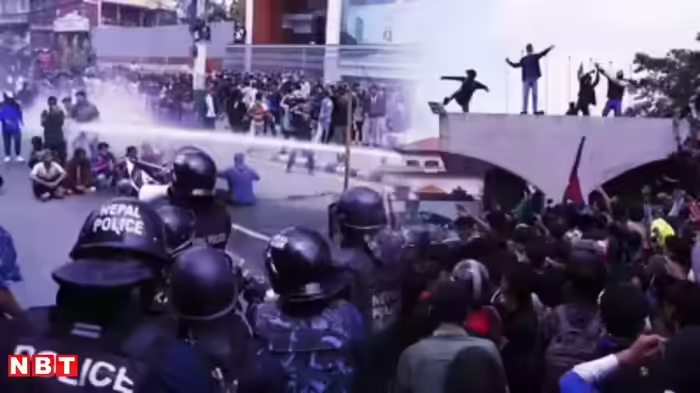Five-time Nepal PM Deuba, wife thrashed; Khanal’s wife burnt alive: Ugly face of ‘Gen Z’ protests
In a shocking turn of events that has gripped Nepal, violent anti-government protests led primarily by disillusioned Gen Z demonstrators escalated to deadly extremes this week. Former Prime Minister Sher Bahadur Deuba, who has served as Nepal’s head of government five times, was left injured and bleeding after being attacked by protestors. His wife, Arzu Rana Deuba, was also reportedly assaulted by the mob in a disturbing escalation of hostilities targeting political elites.
Perhaps even more horrifying, protesters set fire to the residence of former Prime Minister Jhala Nath Khanal. Trapped inside was his wife, Rajyalaxmi Chitrakar, who was burned alive as flames engulfed the house. Emergency services reportedly failed to reach the scene in time, and the tragic death has sent shockwaves through the nation and the region.
The protests began as a digital movement against the government’s controversial decision to ban 26 major social media platforms, including Facebook, YouTube, and X (formerly Twitter). Labeled the “NepoKids Movement” by the youth, the uprising rapidly turned into a broader rebellion against systemic nepotism, lack of opportunity, and political corruption. Most of the demonstrators were young, leaderless, and organized primarily through underground networks and VPN-accessed platforms.
What started as peaceful demonstrations quickly deteriorated into violent confrontations. Government forces responded with tear gas, rubber bullets, and in some cases, live ammunition. Clashes between police and protesters have now left at least 19 people dead, including several officers, according to official figures. Human rights organizations have condemned the disproportionate use of force and are calling for independent investigations.
Following the surge of violence and mounting public pressure, Prime Minister K.P. Sharma Oli announced his resignation late Tuesday night. His departure marks a significant moment in Nepal’s political landscape, which has long been marred by instability, elite dominance, and weak democratic institutions.
The international community has expressed deep concern over the situation. India has issued a travel advisory for its citizens, and diplomatic missions in Kathmandu are closely monitoring developments. Flights in and out of Nepal were briefly suspended amid the chaos, and the country remains under partial curfew in multiple districts.
What makes this wave of unrest different is its distinctly generational character. Unlike previous political movements in Nepal, this uprising is not being led by traditional parties or ideologies—it is being driven by young people frustrated with a system they believe has failed them. Their slogans, memes, graffiti, and decentralized leadership have confused traditional power structures and left authorities scrambling for answers.
As the country reels from the brutal killing of a political spouse and the public beating of a former prime minister and his wife, questions are now being raised about the future of governance in Nepal. Can the existing political class survive this generational revolt, or is the Himalayan nation on the brink of a deeper transformation?
Only time will tell, but one thing is clear: Nepal is witnessing not just a political crisis, but a generational reckoning.
